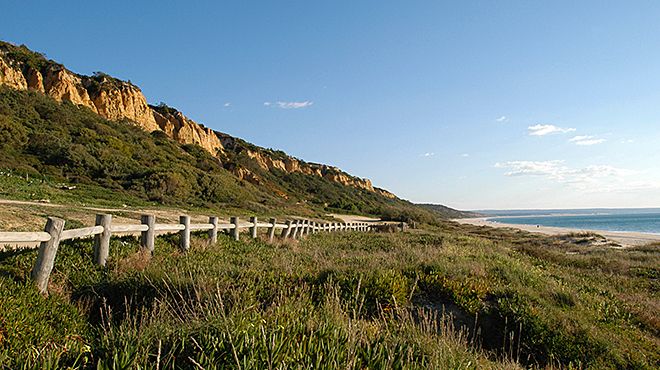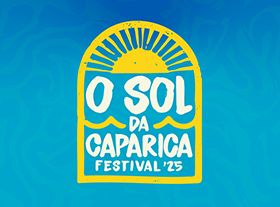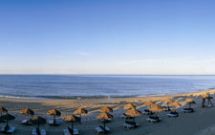Costa de Caparica - Terras da Costa, Acácias e Medos

Following the town of Costa da Caparica comes an expanse of sands that goes on to cover an approximate 30 kilometres through as far as Fonte da Telha and which mostly falls within the Arriba Fóssil (Fossil Cliff) Protected Area of Costa de Caparica. The sanded area may be divided into three main areas - the "Terras da Costa", "Acácias" and "Medos" - are themselves divided up into numerous beaches without any apparent dividing borders. They have gradually taken on various names, generally after the nearest café or restaurant or because they have a different entranceway off the main road.
All beaches have their own car parking facilities and are further linked by a very characteristic form of transport - the Transpraia - a small open train which sets off from the town of Costa and covers the length of this enormous beach as far as Fonte da Telha, with stops at numerous beaches on route. Given the sheer expanse of sand, these Beaches provide all the space needed for football and volleyball or simply setting off on a long walk along the shore. The sea is normally calm and inviting although occasional strong waves bring in the surfers and bodyboarders.
From the many, the Morena and Sereia Beaches are famous for their lively café terraces while the Castelo, Rei and Rainha Beaches offer a more family oriented environment. Meanwhile, Bela Vista Beach was the first to be purpose dedicated a naturist beach in Portugal. Fonte da Telha, the last stop on the Transpraia mini-train, is located right at the end of this long sandy stretch of coastline. The Beach covers some 2 kilometres, protected by a 70 metre high cliff that is now often used for hang-gliders to take off from.
Blue Flag: Praia da Mata, Praia da Rainha, Praia da Sereia and Praia do Infante
Accessible beach: Praia da Rainha




 Explore
Explore 
 Remember and Share
Remember and Share 


